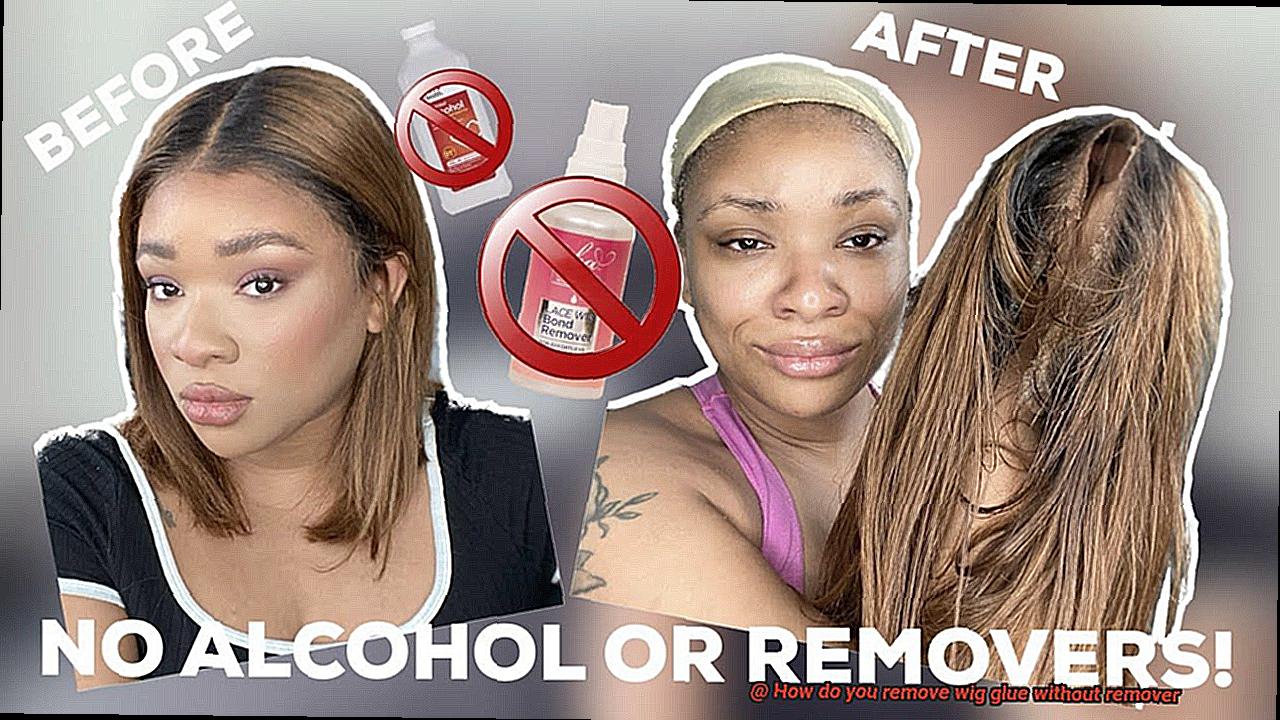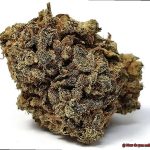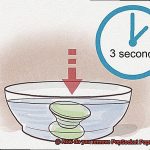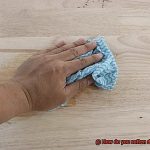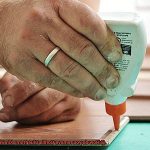Struggling to remove wig glue without a remover?
Contents
We’ve got your back. Wig glue can be a real pain, but don’t worry – there are alternative methods that won’t break the bank.
In this blog post, we’ll explore some unconventional yet effective techniques to bid farewell to wig glue trouble. From everyday household items to easy DIY solutions, we’ll give you step-by-step instructions and insider tips for a hassle-free removal process.
Say goodbye to sticky situations and reclaim your natural looks with our handy guide.
What is Wig Glue?
Whether you wear wigs for fashion, medical reasons, or theatrical performances, wig glue is an essential tool for achieving a secure and natural-looking style. In this comprehensive guide, we will explore everything you need to know about wig glue, from its purpose and ingredients to application tips and alternative removal methods. Get ready to unlock the secrets of flawless wig application.
- Definition: Wig glue is a specially formulated adhesive designed to secure wigs and hairpieces in place.
- Types: Liquid, gel, or tape forms are available to cater to different preferences and needs.
- Purpose: Creates a seamless hairline, prevents wig shifting or slipping during activities.
Ingredients in Wig Glue:
- Polymers: Provide adhesive properties and allow the glue to stick to both the wig and scalp.
- Resins: Strengthen the bond between the wig and the wearer’s hair.
- Solvents: Ensure easy application and removal of the glue.
Alternatives to Wig Glue Remover
Wearing a wig can be a joyous way to transform your hairstyle, but the sticky struggle of removing wig glue can sometimes leave you feeling frustrated. Fear not. In this blog post, we will explore a variety of alternative methods that will help you say goodbye to wig glue without the need for specialized removers. So let’s dive right in and discover these magical solutions.
Oil-based Magic:
One tried-and-true method involves the use of oil-based products such as baby oil or olive oil. Simply apply the oil to the glued area and let it rest for a few minutes. The oil works its magic by dissolving the adhesive, making it a breeze to gently remove.
Alcohol to the Rescue:
If you find yourself lacking oil, don’t fret. Reach for alcohol-based products like rubbing alcohol or even vodka as an alternative. Apply them onto a cotton pad or cloth, then gently rub the glued area. The alcohol acts as a superhero, dissolving the adhesive and enabling seamless removal.
Warm Water and Soap:
An alternative method that won’t leave you feeling oily is to use warm water and mild soap. Immerse the glued area in warm water for a few minutes to loosen the adhesive, then gently rub with soap to eradicate it. This gentle method ensures both your wig and natural hair remain unharmed.
Harnessing Nature’s Power:
Nature’s pantry holds secret remedies too. Leveraging the acidic properties of lemon juice or vinegar can be an effective natural alternative. Apply them to the glued area, let them sit for a while, and witness their magical prowess as they break down the adhesive.
Patience is Key:
While these alternative methods may take slightly more time than using a dedicated wig glue remover, exercising patience is crucial. Trust us, it’s worth it to avoid any potential damage.
Post-Removal Care:
After successfully removing the glue, reward your wig with some tender loving care. Thoroughly clean and condition it to maintain its appearance and ensure its longevity.
Using Natural Oils to Remove Wig Glue
Say goodbye to the sticky struggle of removing wig glue with these hassle-free alternatives that work like magic, all thanks to the power of natural oils. Not only are they safe and gentle on your hair and scalp, but they are also readily available and affordable. So let’s dive right in and explore the various natural oils that can help you bid farewell to wig glue woes.
Coconut oil is a go-to option for many when it comes to removing wig glue. Its high fat content helps to dissolve the adhesive, making it easier to remove. Simply warm up a small amount of coconut oil between your hands and apply it directly to the glued areas. Gently massage the oil into the glue, allowing it to penetrate and break down the adhesive. After a few minutes, you can begin to gently peel off the wig, starting from the edges and working your way towards the center.
Olive oil is another effective natural oil for wig glue removal. Its moisturizing properties help to soften the glue, making it easier to remove without causing damage to your hair or scalp. Apply a generous amount of olive oil to the glued areas and let it sit for at least 10 minutes. This will give the oil enough time to penetrate and loosen the adhesive. Once the glue has softened, you can use a comb or your fingers to gently remove it. Remember to be patient and avoid pulling too hard, as this can cause breakage.
If you’re looking for a natural oil that promotes hair health while removing wig glue, argan oil is a great choice. Rich in nutrients and antioxidants, argan oil effectively breaks down adhesive residue. Apply a few drops of argan oil directly onto the glued areas and gently massage it in. Allow it to sit for about 15 minutes before attempting to remove the wig. The adhesive should have loosened enough for you to peel off the wig easily.
Tea tree oil not only helps to dissolve wig glue but also keeps your scalp clean and healthy. Dilute a few drops of tea tree oil in water and apply it directly onto the glued areas. Massage it in gently and let it sit for about 10 minutes. The tea tree oil will help to dissolve the adhesive, making it easier to remove the wig without causing any damage.
When using natural oils to remove wig glue, remember to be patient and gentle. Allow the oils enough time to penetrate and break down the adhesive, and avoid pulling too hard on the wig, as this can cause hair breakage. It may take a few tries before you completely remove all the glue, but with persistence and care, you can achieve a clean and adhesive-free result.
Using Warm Water and Soap to Remove Wig Glue
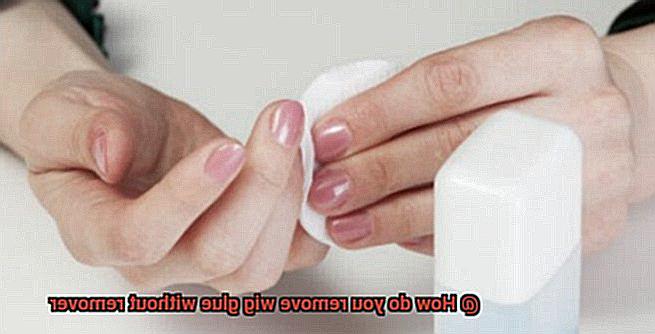
In this comprehensive guide, we will take you through the simple yet effective process of using warm water and soap to remove wig glue. Say goodbye to sticky hairlines and hello to a clean, natural look.
Preparation:
Before embarking on the glue removal journey, gather the following supplies: a basin or sink, warm water (not too hot), mild soap or shampoo, a towel, and of course, your trusty wig. With these essentials ready, you are all set to bid farewell to that pesky wig glue.
Step-by-Step Guide:
- Fill the basin or sink with warm water: Ensure that the water temperature is comfortable and safe for your precious wig.
- Create a soapy solution: Add a few drops of mild soap or shampoo to the water, gently mixing until it forms a foamy concoction. This will be your magical elixir for removing the glue.
- Soak the wig: Carefully place your wig into the soapy water, ensuring it is fully submerged. Allow it to soak for 10-15 minutes, allowing the warm water and soap to work their magic on the adhesive. During this time, sit back and relax as the glue begins to loosen its grip.
Breaking Down the Glue:
Massage gently: After the soaking period, remove the wig from the water and softly massage the areas where the glue is applied. Apply gentle pressure using your fingertips or a soft brush, working in circular motions. This massaging action helps break down the adhesive bonds, making removal easier.
Rinsing and Repeat:
- Rinse thoroughly: Rinse the wig under warm running water to eliminate any soap residue. Be mindful not to tug or pull on the wig during this step, as it may damage the delicate hair fibers. Let the water flow through the wig, ensuring every strand is cleansed.
- Repeat if necessary: If there are still traces of glue remaining, don’t fret. Simply repeat steps 3 to 5 until all residue is gone. Persistence is key when it comes to achieving a glue-free wig.
Drying and Styling:
- Pat dry with a towel: Gently pat the wig dry using a soft towel. Avoid rubbing vigorously, as this may cause tangling or damage to the hair fibers. Instead, gently squeeze out excess water and allow the towel to absorb moisture.
- Air dry: Once the wig is partially dry, place it on a wig stand or lay it flat on a clean surface to air dry completely. Avoid using heat or blow dryers, as they can cause damage and alter the shape of the wig. Give it ample time to dry naturally before styling or wearing it again.
Using Heat to Soften Wig Glue
Fear not. In this comprehensive guide, we will unveil the magical technique that can transform your wig removal struggles into a breeze: heat. Harnessing the power of heat is a game-changing method that softens wig glue, allowing for its easy removal without any harm to your natural hair. So, grab your blow dryer, hot towel, or hair straightener, and let’s embark on a journey into the enchanting realm of heat.
Blow Dryer – Your Trusty Sidekick:
The blow dryer acts as your faithful ally in the fight against wig glue. Simply direct the warm air onto the glued area for a few minutes and witness as the adhesive begins to melt away. Remember to use low or moderate heat settings to ensure a safe and effective process.
Hot Towel – Indulge in Spa-like Treatment:
Elevate your wig removal session into a luxurious spa experience by employing the hot towel method. Dampen a towel with hot water, wring out any excess moisture, and place it over the glued area. Allow the comforting warmth to weave its magic for a few minutes while you bask in pure bliss.
Hair Straightener – Exercise Caution:
For those seeking precision, the hair straightener can be a valuable tool. However, it is crucial to exercise caution when using this method to avoid any undesirable consequences. Apply gentle pressure and utilize low heat settings to prevent any damage to your wig or natural hair.
Eliminating Residue:
While heat works wonders in softening wig glue, it might not completely eradicate all adhesive residue. For stubborn remnants, reach for a specialized remover or explore alternative techniques to ensure a pristine finish.
Nurturing Your Hair and Wig:
After successfully softening the glue, it is vital to delicately comb through your natural hair and wig using a wide-toothed comb or your fingertips. Remember to cleanse your scalp and natural hair using a gentle shampoo to eliminate any residue. Follow up with a moisturizing conditioner to maintain the health and hydration of your hair.
Using Rubbing Alcohol or Acetone to Dissolve Wig Glue
If you’ve ever struggled with removing stubborn wig glue, fret no more. In this comprehensive guide, we will explore the power of rubbing alcohol and acetone as effective solvents to dissolve wig glue. Get ready to bid adieu to sticky residue and tangled messes as we dive into the step-by-step process of using these household heroes.
Patch Test:
Before embarking on your wig glue removal journey, it is crucial to conduct a patch test. Apply a small amount of rubbing alcohol or acetone on an inconspicuous area of your wig to ensure it does not cause any damage or discoloration. Safety first.
Saturate and Dab:
Once your patch test is successful, saturate a cotton ball or pad with the chosen solvent – rubbing alcohol or acetone. Gently dab the affected area of the wig, allowing the solvent to penetrate the glue. The magic begins.
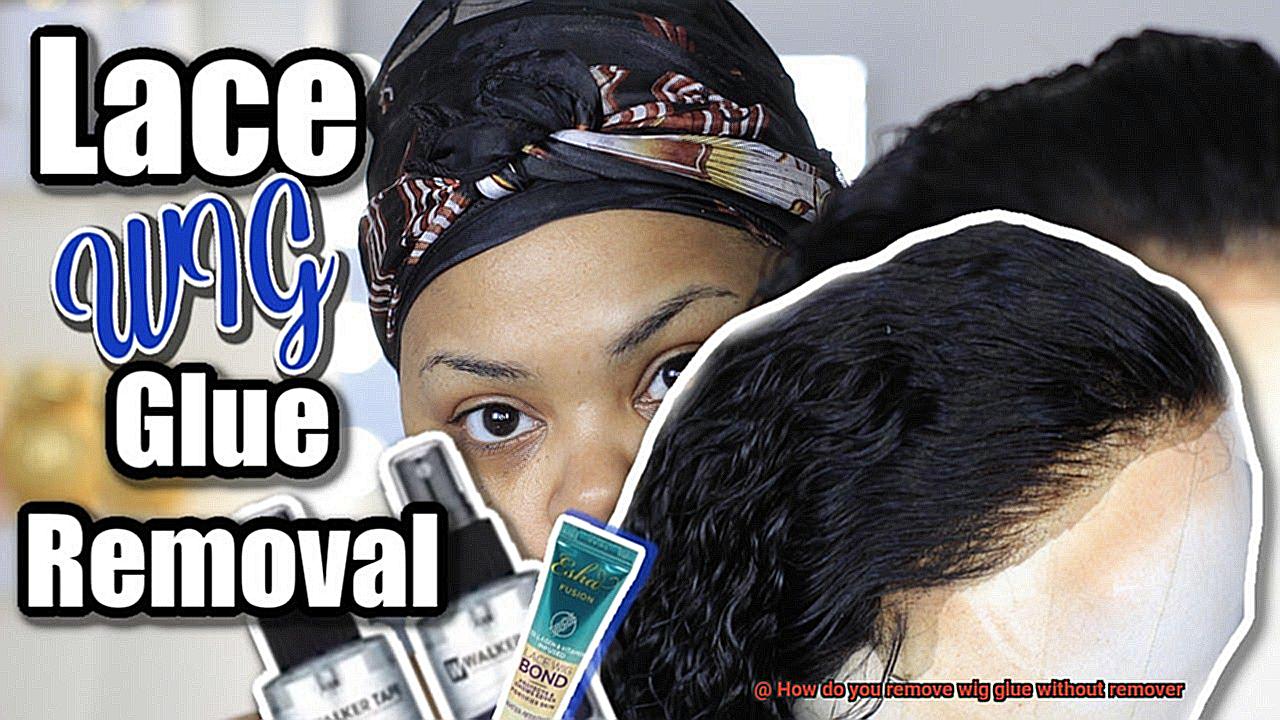
Massage and Loosen:
After sufficient saturation, gently massage the area with your fingers or a comb to help loosen the adhesive bond. Treat your wig with care and avoid pulling or tugging too forcefully, as this can lead to damage. Let your fingers work their magic.
Wipe Away:
As you massage the area, you’ll notice the glue starting to dissolve and become sticky. Use a clean cotton ball or pad to wipe away the dissolved glue. Repeat this process until all traces of glue have vanished. Watch that sticky residue disappear.
Post-Glue Care:
Rubbing alcohol and acetone can be drying to both natural hair and synthetic fibers. To prevent dryness and damage, it is essential to thoroughly wash and condition your wig after removing the glue. Treat your wig like royalty.
Proper Wig Maintenance:
Remember that maintaining your wig properly is key to prolonging its lifespan. Regular cleaning and maintenance will help preserve its quality and ensure it stays fabulous for longer. Keep your wig looking fabulous.
Precautions When Removing Wig Glue Without a Remover
Removing wig glue without a remover can be a challenging task, but with the right precautions, you can ensure a safe and successful removal process. Here are some important steps to take:
- Gather your tools: Before you start, make sure you have all the necessary tools on hand. These include a wide-toothed comb, a towel, rubbing alcohol, and oil-based products like coconut oil or olive oil. These will be your trusty sidekicks throughout the process.
- Gently comb through your hair: Before diving into the glue removal process, gently comb through your hair with a wide-toothed comb. This will help loosen any tangles or knots and make the whole process much easier and less painful. Be patient and take your time to avoid any unnecessary hair breakage.
- Protect your natural hair: To protect your natural hair from excessive rubbing, cover it with a towel or cloth before applying any products or removing the glue. This will prevent any damage to your natural hair and scalp.
- Use rubbing alcohol sparingly: If you choose to use rubbing alcohol, apply it sparingly and only to the areas where the glue is present. Avoid getting it on your scalp or hair as it can be drying and irritating. Use a cotton ball or swab to apply the rubbing alcohol for more precise application.
- Try oil-based products: Massaging oil-based products like coconut oil or olive oil onto the glued areas can help soften the adhesive and make it easier to remove. Allow the oil to sit for a few minutes before gently working through the glue with your wide-toothed comb.
- Take breaks if needed: Removing wig glue without a remover may take longer than using a specific product. It’s important to take breaks if needed to prevent hair breakage or scalp irritation. Rushing through the process can cause more harm than good.
- Wash and condition your hair: Once you have successfully removed the glue, give your hair a good wash with a mild shampoo. Follow up with a conditioner to restore moisture and nourishment to your hair.
- Seek professional guidance if needed: If you experience any discomfort or irritation during the removal process, it’s important to stop immediately and seek professional guidance. A hairstylist or dermatologist can provide expert advice and ensure the safety of your hair and scalp.
hCjoBMmCyx4″ >
Also Read: How To Remove Glue In Hair Extensions?
Conclusion
Removing wig glue without remover can be a tricky task, but fear not, there are alternative methods to help you get rid of that stubborn adhesive. No need to panic if you don’t have a specific wig glue remover on hand – you can still achieve wig liberation with a few household items.
One method involves the use of oil, such as coconut or olive oil. These oils work by breaking down the adhesive and making it easier to remove. Simply apply the oil to the glued area and gently massage it in. Let it sit for a few minutes to allow the oil to work its magic, then carefully peel off the wig.
Another option is using alcohol, specifically rubbing alcohol or vodka. These liquids have properties that dissolve the glue, allowing for an easier removal process. Dampen a cloth or cotton ball with alcohol and gently dab it onto the glued area. Give it some time to soak in before attempting to remove the wig.
If you’re looking for something more natural, try using warm water mixed with mild soap or shampoo. Create a soapy solution and apply it generously to the glued section of your scalp. Gently rub the area in circular motions, allowing the soap’s cleansing power to loosen up the adhesive. Rinse thoroughly with warm water and voila – say goodbye to that pesky wig glue.
Remember, when using these alternative methods, patience is key. Take your time and be gentle during the removal process to avoid damaging your natural hair or wig. Always follow up with proper cleaning and conditioning of both your scalp and wig once you’ve successfully removed all traces of glue.
So there you have it – no need for expensive wig glue removers when you can tackle this challenge with items found right at home.

